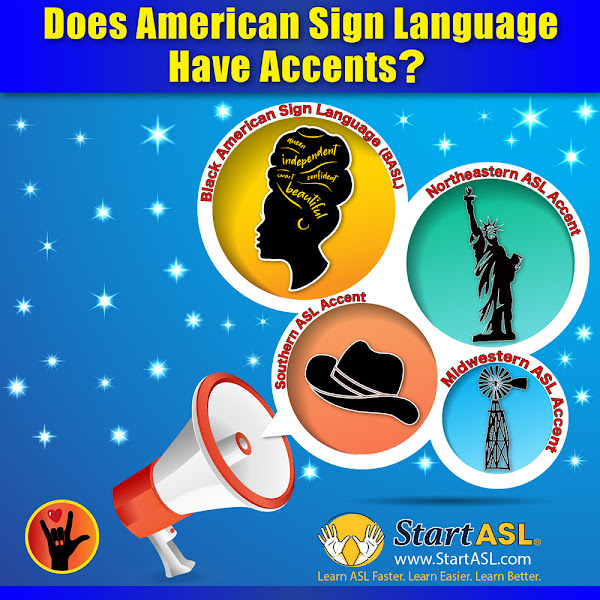Does American Sign Language Have Accents?
American Sign Language (ASL) tracks its origin straight back to the 19th century in France. And like any voiced or signed language, ASL has evolved over time to represent users’ cultural and regional variances.
American Sign Language isn't a rendition of English. Instead, it’s a unique language that has its own sentence structure, idioms, word formation, grammar, and pronunciation. Just like other natural languages, ASL has developed spontaneously in humans through extended use and repetition without cognizant planning. IIt is the primary sign language utilized by Deaf and Hard of Hearing people in the United States Of America and the most of English-speaking Canada. ASL is really a complete, methodized visual language with both manual and non-manual features.
Speakers of American Sign Language generally have their accents or communication patterns. And similar to all other languages, ASL is characterized by regional variants and alterations in tone. With regard to sign language, a style or accent is detectable in precisely how words are signed in different ways. It is a lexical variation, like how certain US citizens say “pop” while other people say “soda” when talking about a soft drink.
Cultural and Regional Variations of American Sign Language
Individuals who utilize spoken languages have got diverse accents or variations in the way they converse based on where they’re coming from. Additionally, even within one country, people’s accents vary from region to region. As an example, in the US, people from New York have New York accents, and people from the South have Southern accents. Similarly, accents, often known as styles, occur in ASL.
A specific individual’s ASL accent or style would be determined by their phrases, expressions, gestures, behaviors, speed of execution, and hand movements. ASL accents, overall, are influenced by users’ physical condition, age level, culture, place of birth, and use of idioms and slang. An excellent ASL user can often determine what region or culture an individual is coming from depending on how they sign.
Black American Sign Language (BASL)
This particular language evolved due to the fact that US schools for the Deaf in the late 19th century didn't acknowledge Black students. Thus, BASL come about from the Black culture to meet the students’ needs. It includes Black idioms and slang in conjunction with standard ASL elements.
Regional ASL Styles or Accents
At the level of word meaning, the exact same signed notion in ASL can easily signify different things in several areas of the United States. For instance, in the western states, most notably California, the B hand shape, with the palm held outward and shaken vertically, signifies the city of Berkeley. On the flip side, this particular sign generally signifies the city of Boston within the eastern states.
Northeastern ASL Accents/Styles
New York - Just like their Hearing counterparts, Deaf/HoH ASL users from New York City sign quickly. ASL users coming from New York sign faster and utilize various body language and facial expressions than those from other areas of the US. Furthermore, they use New York slang and are more likely to implement more profanity!
Philadelphia - The Philadelphia region features some unusual signs because of the city’s long history of educating Deaf/HoH people to communicate via speech and lip-reading. They have created a number of home-grown signs that are presently part of that region’s ASL accent or style.
Southern ASL Accent/Style
Southern ASL users draw out their signs to mimic the well-known Southern drawl. Southerners in addition touch their chests and the lower section of their faces more often when signing, and those actions have grown to be part of the South’s ASL accent or style.
Midwestern ASL Accent/Style
Whilst signers coming from the Northeast are generally quick with regards to their signing and Southerners are slower and meticulous, Midwesterners are usually in the middle. To illustrate, American Sign Language users from Ohio are usually calm and relaxed with regards to their signing, not very fast or too slow.
The Effect of ASL Accents/Styles on Communication
Accents mirror people’s distinctive backgrounds, and a lot of them are proud of their accents and style. However, as with spoken English, having a distinctive ASL accent could cause challenges in connecting with other native users in work, educational, and social settings.
For these reasons, a number of ASL users learn how to modify or eliminate their accents to enhance signed communication skills. Another way in addressing this challenge is through standardization of ASL to help users communicate more efficiently.



Comments
Post a Comment